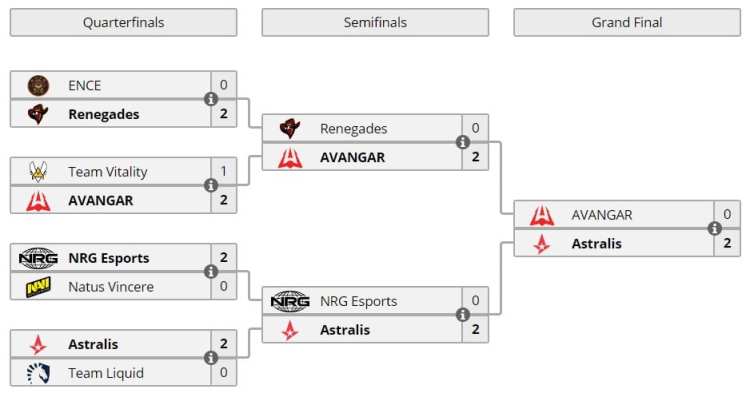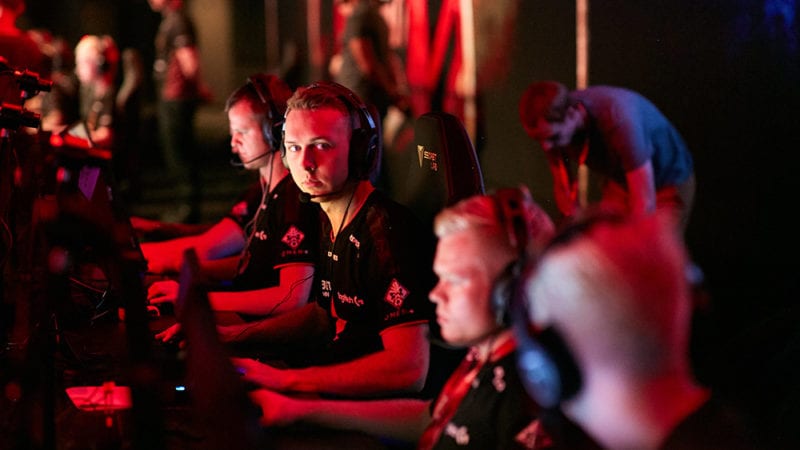Air guitars and cringey production aside, the StarLadder Berlin Major has been thrilling. The rise of young superstars Zywoo and Jame contrasted starkly with the downfall of fan favorites Ence, NIP, and FaZe, all culminated in one of the most entertaining – and accessible – CS:GO events of all time. However, we can’t help but wonder what the major could have been with a few minor tweaks to it’s format.
The Same format, the same results
Starladder stuck with the tried-and-true three stage major format: “The new challenger stage” and “The new legends stage” – both 16 Team Swiss format brackets where the Top 8 teams advance – all culminating in “The new champions stage” – a single elimination best of 3 bracket. While overall the system works, some fans were understandably disappointed by the seeding of the “champions” stage, which pit the highest-ranked teams against each other in the quarterfinals.

While North American fans were hoping for a new NA team to prevail for the first time since Cloud 9’s legendary run in 2018, general fans of the game were hoping for a close match in the wake of two consecutive 2-0 victories by Astralis in the London and Katowice majors this past year. Both parties will leave unsatisfied, as the lopsided seeding saw the most even matches skewed to the left side of the bracket – the exact opposite of what you want in a major.
A “Grand” Final
The Grand Final saw a true David versus Goliath match up between Avangar and Astralis.
Avangar had limped their way through the Challenger and Legends stages en-route to favorable matchups against Vitality and Renegades on their path to the finals. Breakout performances from young stars Qikert and Jame provided Avangar with the spark they needed to keep opponents guessing, and the addition of former major MVP Adren provided some much-needed experience to the young core. Jame specifically deserves to be praised for his performance, as the 21 year old put together an impressive stat line including .52 deaths per round (2nd best in the tournament), and the 2nd highest entry percentage of the major.
What a way to win the round, mr @JAMEPAIN
Astralis had much more of a challenge, going up against #1 ranked Team Liquid in the Quarterfinals and budding superteam NRG in the semifinal. Fortunately for fans of the Danish team, Device has returned to his former glory and showed once again why he should still be considered one of the best players in the world, all whilst bagging the 2nd major MVP of his storied career.
Infer-no upsets here
Map 1 saw Astralis pick Inferno. While Avangar had favorable results on the map thus far in the tournament, they were no match for the Astralis powerhouse led by Gla1ve. Avangar were outmatched from the get-go, going down 0-8 before finally picking up a round on a quad kill from Adren. Avangar were never able to string together any rounds on their CT side as Jame was consistently out AWPed by Device (including this very telling frag through a smoke).
Ultimately, Astralis took the map 16-6, faltering only momentarily on their CT side.
“Dust”-ing off the haters
Map 2 brought us to Dust 2, where Astralis once again showed us how dominant they could be. With standout performances once again from Device and Xyp9x, and another disappointing performance from Jame from the other side of the stage, the Danes were able to immortalize themselves in CS:GO history as the first-ever three-peat major champions. The final score was a staggering 16-5.
MAJOR CHAMPIONS
Statistically speaking Avangar played well, they won 11 opening duals on Inferno and brought several rounds within inches of victory, but inexperience played to their disadvantage as they weren’t able to exploit gimmicks in the same way they did in the previous rounds.
If you weren’t aware that this Astralis lineup is the best in the history of CS:GO, they’re surely reminding you now.
PC Invasion is supported by our audience. When you purchase through links on our site, we may earn a small affiliate commission. Learn more about our Affiliate Policy







Published: Sep 9, 2019 08:42 am